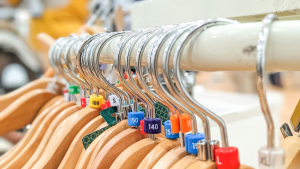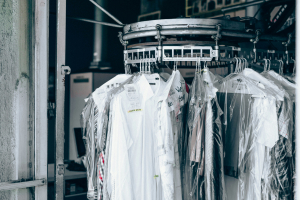How Reverse Logistics Saves Costs in the Fashion Industry
E-commerce fashion companies such as ASOS and Shein are fuelling a significant rise in returns culture. Consumers are over-ordering to be certain of getting the colour and size they want, and returning the rest. This culture is impacting other fashion retailers, which face an increase in the rate of returns that can bring costs, challenges and inventory confusion. Fortunately, these challenges can be quickly addressed with quality reverse logistics systems.

What are reverse logistics?
Reverse logistics are systems that organise the backwards flow of goods in the supply chain, such as returns, recycling and disposal. In fashion retail, return rates are continually rising, and brands are seeking sustainable methods for consumers to dispose of clothes they no longer wear.
Reverse logistics systems include returns management, refurbishment and reconditioning, recycling and confidential disposal. They help simplify the management of returns and create a healthy, sustainable value chain for returns.
Many major fashion retailers partner with a reliable returns management company to simplify this process and reduce wastage.
Cost Challenges in the Fashion Industry
High rates of returns in e-Commerce fashion can present several challenges for retailers and suppliers. Here are some examples:
- Items that cannot be resold or recycled add to wastage
- Staff handling, reclassifying and allocating returned items takes time
- Handling and storing returned items requires additional space and workflows
- Transporting goods back to manufacturing or warehousing for reconditioning has an environmental impact
- Monitoring return rates and quality also takes valuable time.
Approximately one-third of logistics operations in fashion are used to handle returns and their associated costs. With rising costs in every industry, making savings can help keep costs low for consumers.
When facing high return rates, fashion retailers should consider a reliable returns management service that provides:
- Warehousing and Shipping that are appropriate for garments, such as hanging garment storage and transport.
- Reconditioning, including cleaning, repairs, reticketing, pressing and packaging
- Distribution systems for order fulfilment from returns stock.

Environmental impact
The low prices many fashion producers wish to provide are achievable only with high shipping rates at every phase of the supply chain. Researchers predict that, on the current trajectory, the fashion industry could produce over 26% of target carbon dioxide emissions by 2050.
This proportion leaves little room for other industries, such as construction and food production, and should be reduced dramatically. Shifting supply chains towards carbon-neutral logistics providers is a strong first step to reducing your business’s climate impact.
Returns Reconditioning solutions help save money
Using a reliable provider can reduce costs for fashion businesses. Rather than calculating the optimal time and touchpoints for internal staff to deal with returns, investing in a service to handle returns for you removes this labour and planning.
Our expert reconditioning staff deal with hundreds of thousands of units every week. They know what to look for, how to remove stains, how to repair clothes invisibly and return them to a saleable condition. Because our services are performed at scale, we can reprocess your returns for lower costs than in-house teams.
This reduces your wastage figures, as most garments can be rescued and resold. Our customers also find they have improved inventory management, as records of returns are more accurate. You may also improve your resale figures, as returned items are more presentable.
Other benefits
A streamlined returns process is not just good for your bottom line. Smooth returns lead to happy customers, and a positive returns experience can give customers the confidence to purchase from you again.
Partnering with a carbon-neutral provider can also improve your ESG monitoring profile by reducing your business’s third-party carbon footprint. While it may seem a small step, the emissions recorded in the supply chain can make up the largest part of a business’s holistic carbon profile, and taking steps to reduce emissions in this area shows credibility and commitment to sustainable fashion.
Implementing Reverse Logistics in Fashion:
Audit and assess your current business needs in returns management. How many units are returned per quarter? What is the system for handling them? How can it be improved?
Gather quotes from providers. EXCELPRESS are happy to provide accurate quotes to help you make the case for improving returns management in your company.
Use technology to streamline returns management. This may include a barcode scanning system to add all returns to a database. Systems can be set up to trigger action at a certain threshold or monitor the location of returned items in conjunction with new stock.
Implement the new system and train staff to carry out the new processes. When working with a provider like EXCELPRESS, this may be as simple as a designated storage area for returns to be collected, or including returns labels with our address so that end consumers can deliver items directly to our facility.
In today’s returns culture in fashion, EXCELPRESS is a supportive returns partner, with quality solutions to manage and refurbish customer returns at scale.





